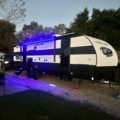Note: This post contains affiliate links. If you purchase through these links, we may earn a small commission at no extra cost to you. These earnings help sustain our travels and keep this blog running.
The Blowout We Didn’t See Coming
Just as we pulled into the beautiful, scenic RV campground office in Matagorda Bay, TX, a man stood on the side of the road waving his arms like his life depended on it.
“Wait! Your tire!” he shouted.
I looked at Stefan, confused. But then we stopped and got out — and that’s when we saw it.
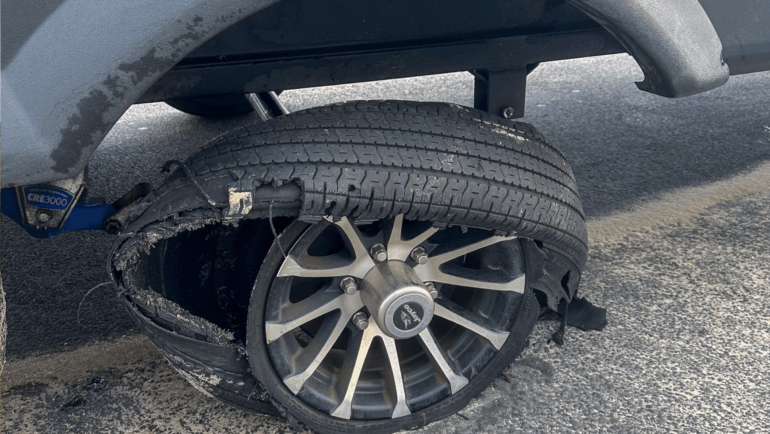
A full-blown (literally) tire blowout on our fifth wheel. Shredded rubber, bent steel belts, and a mess no RV traveler ever wants to see. In the end, we were really lucky because it was only the tire. But it could have been much worse.
We’ve had our share of road bumps over the years, but nothing quite like this. It was a wake-up call, a reminder that even when you plan well, things happen. And while it was inconvenient, it was also one of the most important lessons of our RV life so far.
The Problem: Wrong Tools, Wrong Assumptions
Here’s the thing: we had a spare tire. We even had a Ford F-350 jack. And that’s when my first mistake came in:
I said, “The truck has a jack — we’re fine.”
Technically true. But as we quickly found out, the factory jack that comes with the F-350 is far from ideal when you’re trying to lift a 33-foot fifth wheel loaded with gear and food.
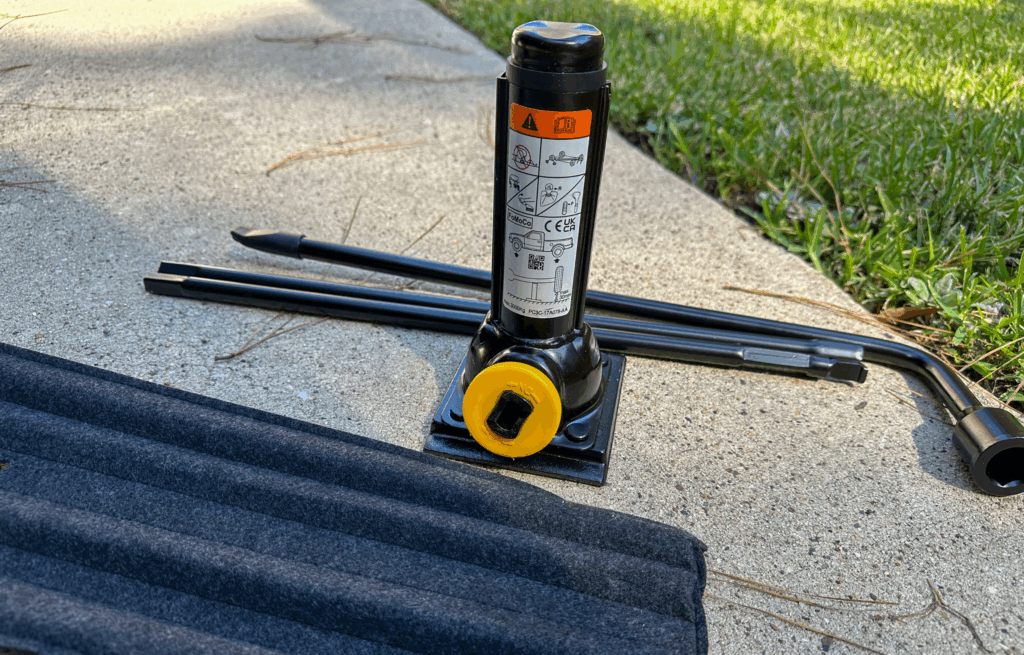 Long story short? It wasn’t going to cut it.
Long story short? It wasn’t going to cut it.
We were lucky the campground staff came to the rescue with their own auto jack so we could get back on the road. But it stuck with us: what if this had happened on the side of a remote Texas highway, with no campground office, no kind stranger, no tools to do the job?
The Solution: A Tractor Supply Run
Matagorda Bay is beautiful, but it’s remote. Amazon Prime wasn’t going to save us in two days. The nearest real option was Bay City, about 30 minutes away, where a Tractor Supply sat like a beacon of hope.
And there it was: the only jack in stock in a 50-mile radius — a Torin Big Red Stubby 20 Ton Hydraulic Bottle Jack.
We immediately bought it for pickup in-store and got ready to take a little road trip. Once we arrived, we were able to request curbside pickup, load it quickly into the F-350, and it’s been with us ever since.
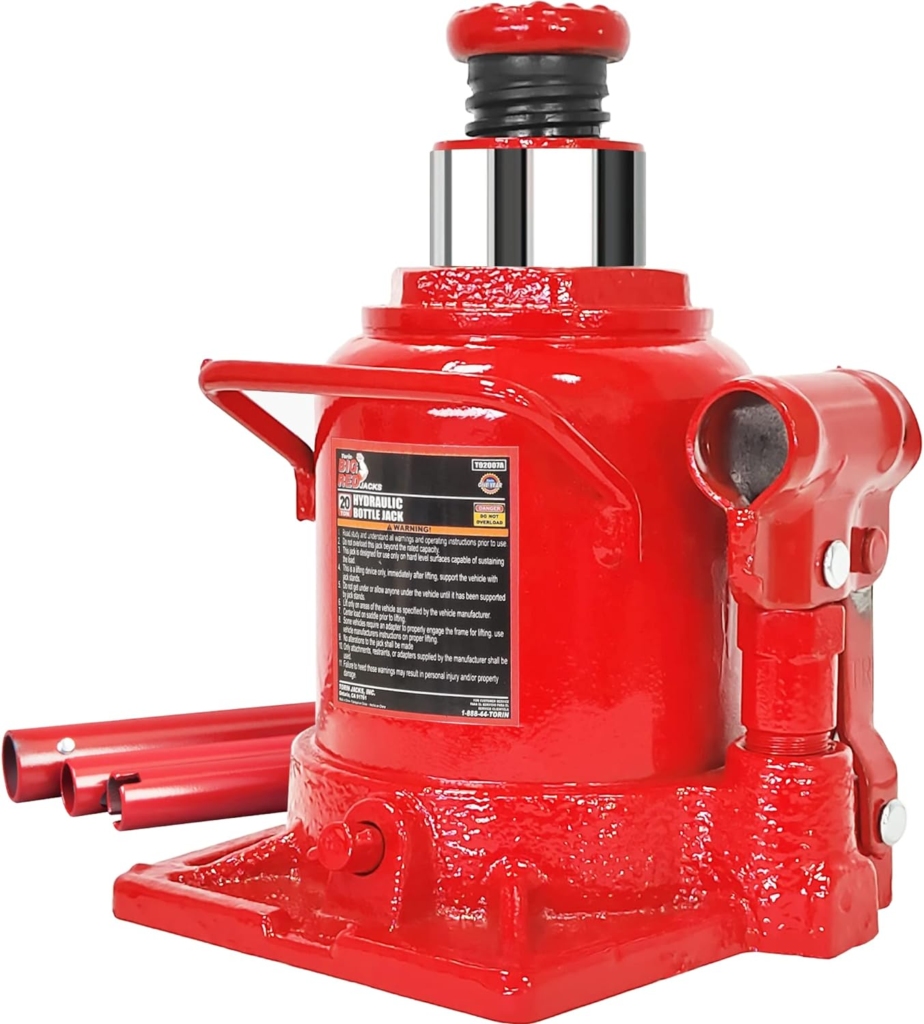
Why the Torin Big Red?
I’m not usually one to rave about tools (I leave that to Stefan), but this jack deserves it. In his exact words, “It lifts like a dream.”
Here’s what sold us (and why it’s now standard gear for every trip):
- Heavy-duty lifting power: 20 tons = 40,000 lbs. More than enough to lift our loaded fifth wheel or truck.
- Compact & stable: Its stubby profile means it fits under the RV axle or frame even on gravel, dirt, or uneven ground but it’s also height adjustable.
- Built to last: Industrial-welded, forged alloy steel construction. Leak-free, rugged base, and tested to meet ASME PASE safety standards.
- Safe & smooth: Built-in overload valve, corrosion-resistant hydraulic oil, and glide-action pump make it easy to use without overextending.
- Versatile: Works for cars, trucks, farm equipment, and heavy-duty machinery. If it needs lifting, this jack can probably handle it.
➡️ Check current price & availability of the Torin Big Red 20 Ton Jack on Amazon (affiliate link)
Lessons Learned About RV Safety & Tools
That day in Matagorda Bay was frustrating, sure. But it was also clarifying. Here are the big takeaways we’d pass on to any RVer:
1. Don’t Rely on Factory Jacks
Truck jacks are designed for emergencies, not for lifting multi-ton rigs. Always carry a heavy-duty alternative. We would have gone for a 12-ton jack had it been available – but it simply wasn’t. So now we’re overprepared in case there is a next time.
2. Pack the Right Gear
A quality jack is just one part of an RV safety toolkit. Add:
-
- Wheel chocks
- A torque wrench
- Spare fuses
- Tire pressure monitoring system (TPMS)
- Roadside emergency kit (reflective triangles, gloves, flashlight)
3. Practice Before You Need It
Don’t wait for a blowout to figure out how to change a tire on your RV. Practice at home or in a safe spot so you know exactly where to place the jack and how to handle the spare.
4. Maintain Your Tires
Check them regularly and look for irregularities or damage. Blowouts often result from under-inflation, overloading, or age-related issues. Keep an eye on tire pressure before every travel day, and replace them proactively.
5. Stay Calm & Safe
If a blowout happens on the road, keep a steady hand on the wheel, slow down gradually, and find a safe spot to pull over. Then deal with the tire.
The Happy Ending
Once we were back to the rig, we put the new jack to the test. Discount Tire sold us a new tire (there wasn’t much to patch up), and Stefan slid the Torin Big Red under the axle. In minutes — even on gravel — he had the rig lifted and the tire swapped. No twisting, no sweating, no frustration.
It was the kind of confidence-builder every RVer should have: knowing you can handle a roadside problem without relying on luck or strangers.
View this post on Instagram
Why This Jack Lives in Our Truck Now
The Torin Big Red now rides with us on every trip, tucked in the back of the F-350, ready for the day we hope never comes again.
Even if it’s the truck tire itself that blows, we wouldn’t dream of using that flimsy factory jack ever again.
It’s not just a tool. It’s peace of mind.
Final Thoughts
If you travel in an RV — whether you’re a part-timer like us or full-time on the road — invest in a reliable jack. It’s one of those things you don’t think about until you desperately need it. And then it’s too late.
We were lucky. You don’t want to rely on luck.
➡️ Get your Torin Big Red 20 Ton Stubby Jack here (affiliate link)
Because at the end of the day, the right tools don’t just fix problems — they keep adventures going.
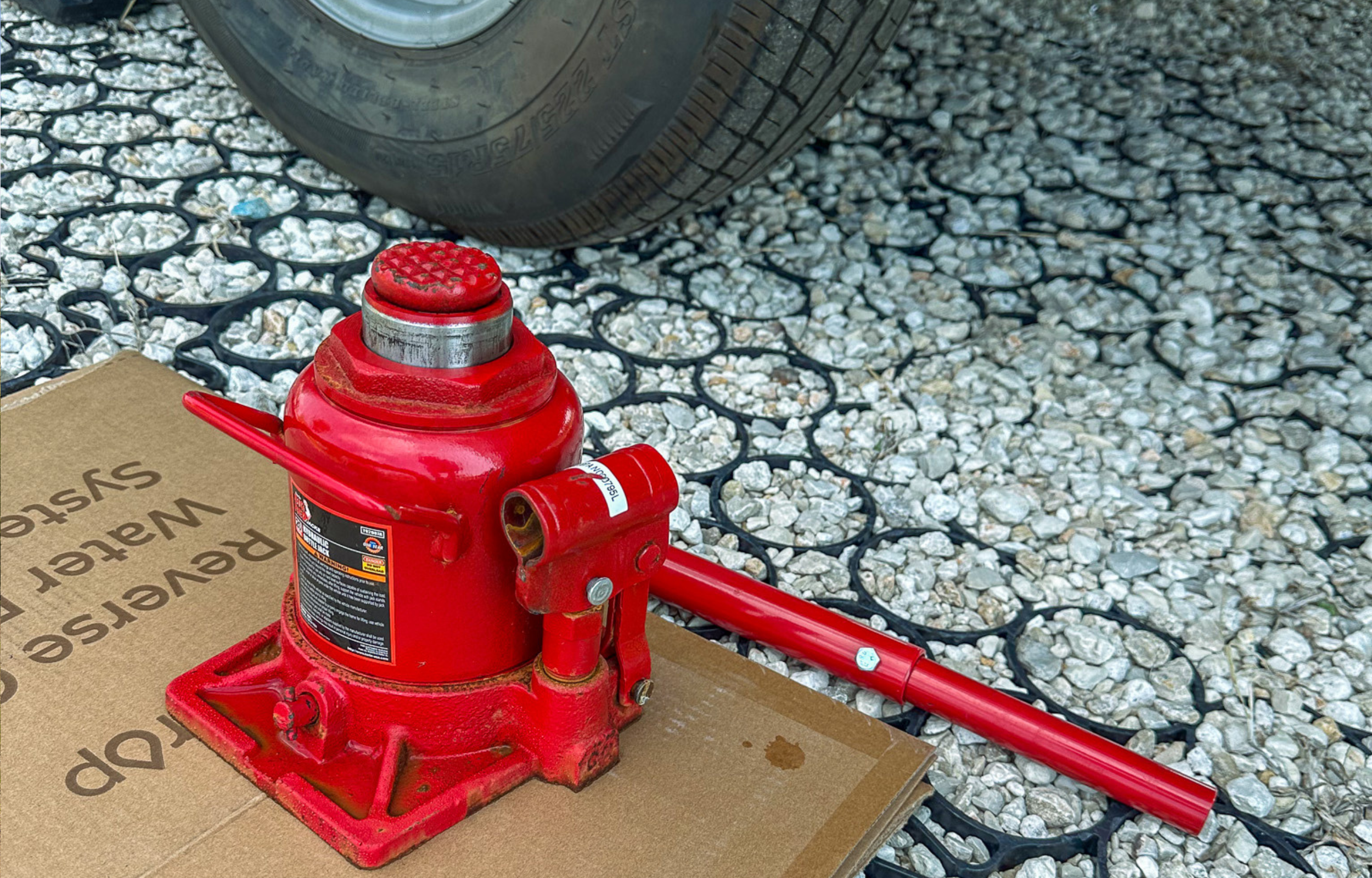
This post contains affiliate links. If you purchase through them, we may earn a small commission at no extra cost to you. These earnings help sustain this website and keep us sharing our travels.


